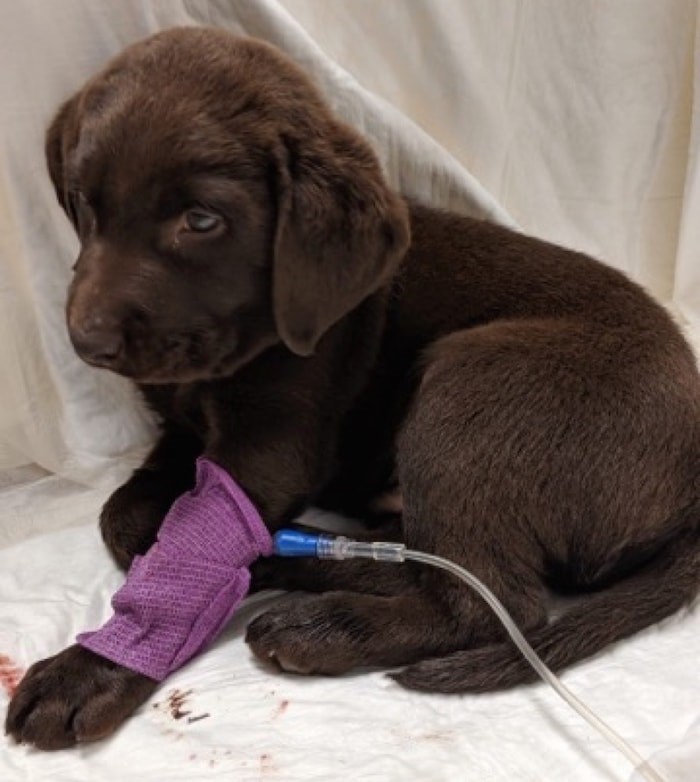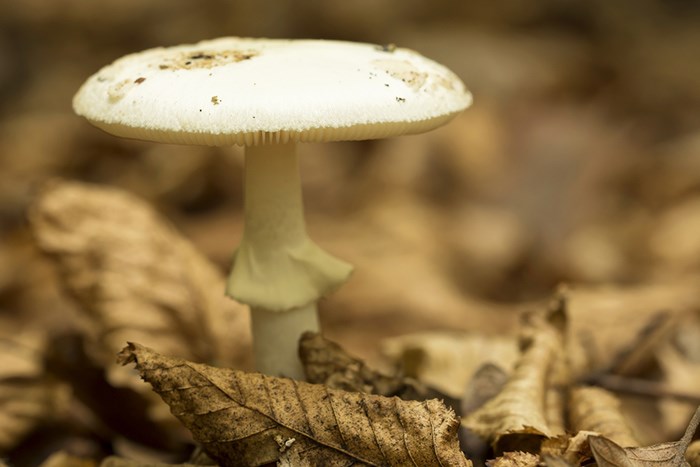 A 16-week-old puppy suspected of eating death cap mushrooms has died. Photo courtesy Victoria Humane Society.
A 16-week-old puppy suspected of eating death cap mushrooms has died. Photo courtesy Victoria Humane Society.
The public is being reminded of the danger posed by death cap mushrooms after a 16-week-old puppy suspected of eating them died.
Victoria Humane Society executive director Penny Stone said the family that owned the puppy couldn’t afford the treatment when it got sick.
“They surrendered it to the vet clinic and the vet clinic called us,” she said.
The society stepped in and took on the cost.
“Unfortunately, it wasn’t the outcome we were hoping for,” Stone said. “But we wanted to give him the chance to get some blood transfusions and try and make sure that he had a fighting chance.
“You’re hoping that you can get it in time, flush his system.”
 Death Cap mushroom/Shutterstock
Death Cap mushroom/Shutterstock
Death cap or Amanita phalloides mushrooms can also kill people, and a Victoria three-year-old died after eating one in 2016.
The mushrooms have some telltale characteristics that set them apart from other fungi, including a greeny-bronze colour to the cap, a veil around the stem, white gills and a large bulb under the ground.
Last October, people on Vancouver Island, in Vancouver and in the Fraser Valley were warned not to forage for mushrooms in urban areas because of the chance they could come across death cap mushrooms.
The death cap is not native to B.C., but was brought in on the roots of trees such as hornbeam, European beech, English and red oak, hazelnut, linden and sweet chestnut. It can also be found under native oak trees.
Death-cap toxins damage the liver and kidney with symptoms such as cramping, abdominal pain, vomiting, diarrhea and dehydration usually occurring within six to 12 hours after consumption, according to the B.C. Centre for Disease Control.
Those symptoms can fade before returning more severely within 72 hours, leading to severe illness and organ failure.
— With files from The Canadian Press



